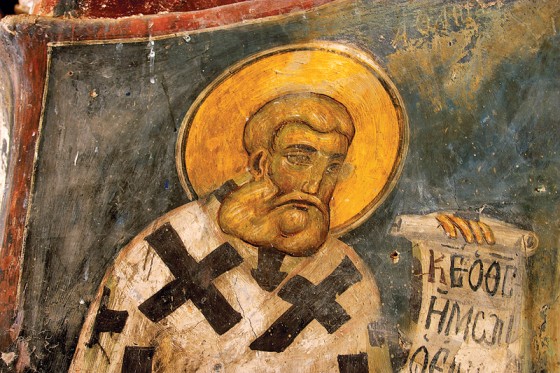From Persecutor to Apostle
The Extraordinary Journey of St. Paul
The Architect of Our Faith
After Jesus Christ himself, no single person shaped the Christian faith more than Paul of Tarsus. His story is a powerful tale of transformation. He journeyed from being the Church's most determined persecutor to its most tireless and influential missionary. His letters make up a large part of the New Testament and provide the foundation for much of Christian belief. Paul’s life shows us that anyone, no matter their past, can be transformed by God's grace and given a new purpose.
Saul of Tarsus: A Man of Three Worlds
Before he was the Apostle Paul, he was Saul, a man whose identity was forged at the crossroads of three great cultures. This unique background perfectly prepared him for his future mission.
Religiously Jewish
Born into a devout Jewish family, Saul was a Pharisee. He studied the Hebrew Scriptures deeply in Jerusalem under the respected Rabbi Gamaliel. His faith was his identity, and he was passionate about defending it.
Culturally Greek
Saul grew up in Tarsus, a busy city rich in Greek language and philosophy. This allowed him to communicate effectively with the wider, non-Jewish world, from debating philosophers in Athens to writing letters to communities across the empire.
Legally Roman
By birth, Saul inherited Roman citizenship. This special status gave him legal protections and freedom of movement that were crucial during his missionary work, eventually allowing him to bring the Gospel to the heart of the empire: Rome itself.
The Light on the Road to Damascus
Saul's passion for his Jewish faith led him to see the followers of Jesus as a threat. Believing he was defending God, he actively persecuted Christians. But on his way to Damascus to arrest more believers, his life was changed forever. A brilliant light from heaven flashed around him, and he fell to the ground. He heard a voice say, "Saul, Saul, why are you persecuting me?" When Saul asked who was speaking, the voice replied, "I am Jesus, whom you are persecuting."
In that moment, Saul's world was turned upside down. The Jesus he thought was a fraud was alive and divine. He was struck blind, a powerful symbol of his own spiritual blindness. For three days he sat in darkness, until a Christian named Ananias, sent by God, came and healed him. The scales fell from his eyes, and Saul was baptized. He had to receive grace from the very people he had set out to destroy.
A Life of Mission: A Timeline
The "Hidden Years" of Formation (c. 36-45 AD)
›After his conversion, Paul did not immediately begin his famous missions. He spent several years in Arabia and his hometown of Tarsus. This was a quiet but essential time of prayer and study, where he deepened his understanding of the Gospel and his new calling. It was a period of preparation that built the spiritual foundation for the difficult journeys ahead.
The First Missionary Journey (c. 45-49 AD)
›Recruited by his mentor, Barnabas, Paul began his first major mission. They travelled to Cyprus and Asia Minor (modern-day Turkey), preaching in synagogues and public squares. They shared the Gospel with both Jews and Gentiles (non-Jews), establishing the first Christian communities in these new territories.
The Council of Jerusalem (c. 49 AD)
›Paul's success with the Gentiles caused a major debate. Some Jewish Christians believed Gentiles had to follow Jewish law to be saved. Paul argued passionately that salvation is a free gift of grace through faith in Jesus. At a meeting in Jerusalem, the Church leaders agreed with Paul. This crucial decision declared that the Gospel was for everyone, opening the faith to the entire world.
Second & Third Journeys (c. 50-58 AD)
›Paul's next journeys took him further into Europe, to places like Philippi, Athens, and Corinth in Greece. He faced constant opposition, including riots, beatings, and imprisonment. Yet, he continued to preach and plant churches. During this time, he wrote many of his famous letters (epistles) to guide and encourage these new Christian communities.
Arrest and Journey to Rome (c. 58-60 AD)
›Back in Jerusalem, Paul was arrested after a riot broke out in the temple. As a Roman citizen, he appealed his case to the Emperor, which meant he had to be sent to Rome. The journey was perilous, including a violent shipwreck on the island of Malta. Even as a prisoner, Paul continued his mission, preaching to guards, officials, and fellow travellers.
A Prisoner for Christ, A Martyr in Rome
Paul finally reached Rome, but as a prisoner under house arrest. Yet his chains did not stop the Gospel. For two years, he welcomed all who came to him, boldly preaching about Jesus Christ. Tradition tells us that St. Paul was martyred in Rome around 64-68 AD during the persecution by Emperor Nero. As a Roman citizen, he was beheaded.

The Basilica of Saint Paul Outside the Walls in Rome, the traditional site of St. Paul's tomb.
His body was buried outside the city walls, at the site where the magnificent Basilica of Saint Paul Outside the Walls stands today. In 2009, scientific testing of bone fragments found in a sarcophagus there, marked "Paul Apostle Martyr," confirmed they date to the 1st century. This brings his incredible story into our modern world, a tangible link to the man who gave everything for the faith he once tried to destroy.
His Enduring Legacy: Hope for Everyone
St. Paul's life is the ultimate story of conversion. It is a powerful testament that no one is beyond God's mercy and that any life can be transformed for a greater purpose. He taught us that the Church is the Body of Christ, that salvation is a gift for all people, and that suffering for our faith can be a powerful witness. His journey from persecutor to apostle is a timeless reminder that with God, there is hope for absolutely everyone.
